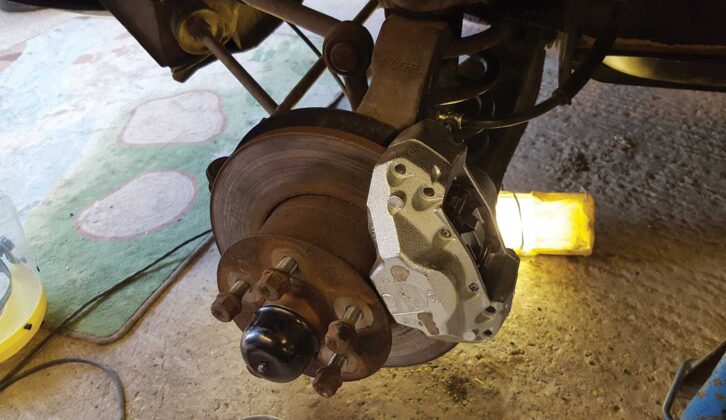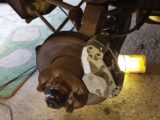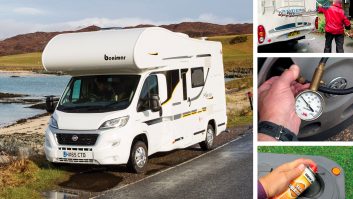The new season is rapidly approaching, but before we can relax at our motorhome site of choice, there are a few tasks to carry out. This not only involves getting any motorhome accessories you may need, or giving your motorhome a clean, but also carrying out some pre-tour checks, to ensure your ‘van is ready to go for another year of touring.
After all, the time before the new season begins is ideal for making sure everything is in working order, regardless of whether you decided to put your motorhome in storage over winter or opted to continue travelling.
We are taking for granted that your motorhome has passed its MoT and the vehicle and habitation servicing is also up-to-date. The checks in this guide are aimed specifically at those who have a ‘van that has been in hibernation, or for anyone who wants to ensure their vehicle is in tip-top condition before they head off on their next tour.
If you’re in a rush, you can also jump to a particular section of our guide, by clicking on the links below.
Pre-tour checks for your motorhome:
Check and charge the batteries
Assess the tyres
Check the brakes
Lights, appliances, windows
Locks and latches
Water systems
Essential tools and kit
For the tasks in this guide, you’ll only need a few basic items – a little can go a long way to helping you have a smooth return to the road. Depending on the tasks you’re doing, you will need the following:
- Warm water
- Car shampoo
- WD-40 or equivalent
- Silicone spray
- White lithium grease
- Graphite grease
- Surgical spirit
- White vinegar
- Cotton buds
- Petroleum jelly
- An old toothbrush
- Microfibre cloths
- Cotton cloths
- A nailbrush
- Some newspaper
Check and charge the batteries
Failing to look after your motorhome’s batteries will mean you end up going nowhere, so it’s important to ensure they stay in good health.
In virtually every ‘van, almost without exception, there will be two batteries.
The vehicle battery starts and runs all of the vehicle systems while on the road, and the required maintenance is limited.
All you can really do is check visually for bulges or physical damage, check and replenish the level of charge, and ensure the terminals are clean.
If your batteries are topped up by being on hook-up or a motorhome solar panel, that’s the most common problem taken care of. Use a built-in meter on the ’van or hook up a multimeter between terminals to check the state of the battery’s charge.
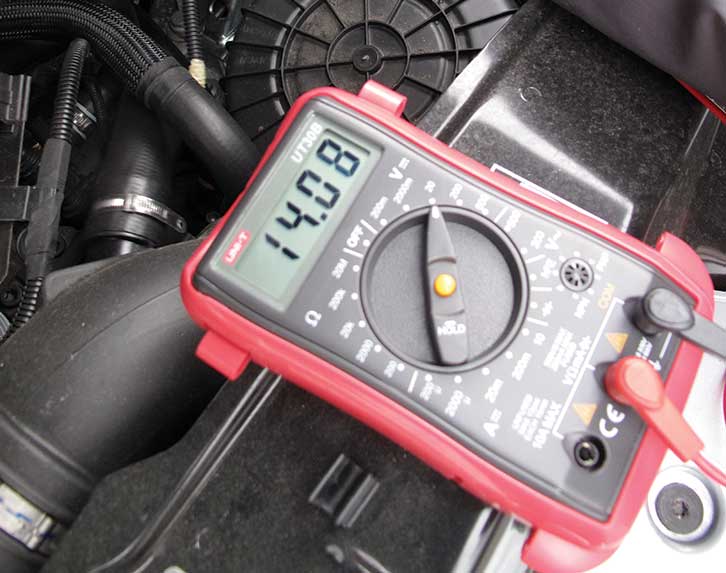
If needed, the best way to charge a battery safely is to remove it from the ’van, but in a lot of modern vehicles, that can be quite tricky.
The next best thing is to disconnect the battery and charge it in situ. Take a look at your handbook for vehicle-specific instructions before doing anything, though, to avoid potential problems with radio codes, alarms and errant dashboard warning lights on reconnection.
When it comes to your motorhome’s leisure batteries, charging is far simpler; not least because on most ’vans, plugging in the mains hook-up will juice up the battery without getting the spanners out.
However, if you have an older vehicle, without a multistage battery charger, a good standalone charger will charge and condition the battery. Again, you will need to disconnect the battery before you connect up the charger.
If the terminals are covered in white fluff, that is oxidation, which you will need to clean off to ensure a good connection. Disconnect the terminal (check the ’van handbook for specific instructions on this) and then use an old toothbrush to dust off the powdery white stuff. If it is a bit more persistent, a couple of squirts of a 50/50 mix of vinegar and warm water will dissolve the remnants, and a bit more brushing will have it sparkling.
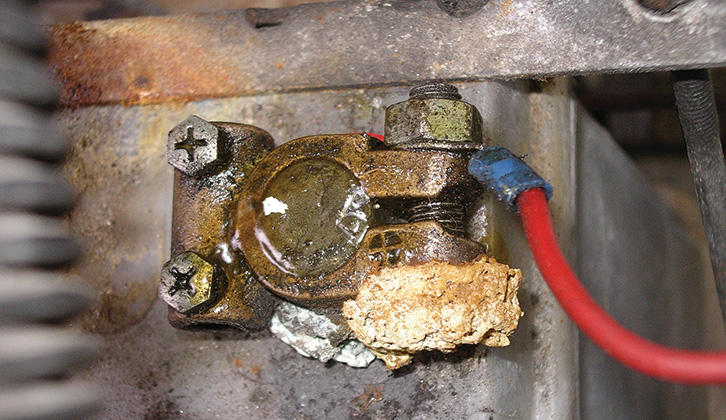
Once the battery has been refitted, a smear of petroleum jelly across the top will help to prevent rapid recurrence.
Assess the tyres
Nothing on a ’van is as safety-critical as the tyres, yet also most likely to be overlooked. Unless a tyre is actually flat, many owners pay them scant attention, which is a big mistake.
Checking the motorhome tyre pressure will be the simplest task. A small digital pressure gauge is a toolbox must-have and can give you change from a tenner. An analogue one works too, so long as it can cope with the high pressures specified for the tyres on a motorhome.
Check the handbook to ensure your pressures are where they need to be. If any are low, top them up and then check again a few days later to see whether this needs further investigation.
Next, using an old sponge, a nailbrush and some car shampoo, give the tyres a good wash. Given the muck and grit that can be present, we’d advise keeping this mixture just for the tyres. This is less about actual cleanliness and more about giving your tyres a good inspection.
Examine the tyre walls for bulges caused by the structure failing. Look closely for signs of cracking, too. Walls can crack and this is easiest to identify at the bottom, where the tyre wall is flexed the most.
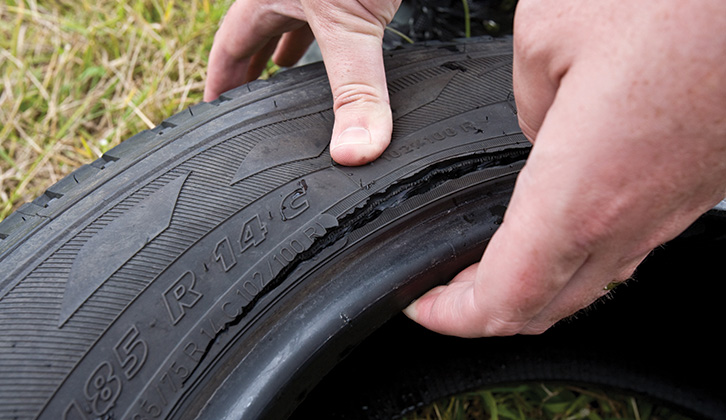
It can be harder to spot radial cracking, but look between the tyre treads for any cracks running around the radius (hence ‘radial’ cracking).
The other thing to look out for is cuts in the sidewall, which are caused by an impact of some sort, or anything stuck in the tread. Any of these problems will require immediate investigation by a specialist tyre workshop.
You can’t do this inspection properly with the vehicle in one position, either. Drive it forward a few feet and clean the tread that was in contact with the ground. Turn the front wheels from lock to lock, too, so you can more easily inspect the inside walls for damage.
At the rear of the vehicle, there is no alternative to sliding underneath (with wheels chocked for safety) and having a good look. In this situation, your mobile phone is a bonus – it works as a torch and you can poke the camera into places your eyes can’t reach to look for signs of damage.
Lastly, check the spare tyre. Yes, it’s a horrible job clambering under the motorhome or winding down a carrier to find that all is well, but if you find yourself in a situation where you need the spare, you’ll be glad you checked.
Ensure that the carrier isn’t red-rusty, too, and apply a little grease if it is starting to get a bit scratchy.
Check the brakes
Let’s be clear here. We are not advocating that you strip-service your brakes on the driveway, but ensuring things are working correctly before you hit the road is simply basic common sense.
Anything that doesn’t feel quite right should always be referred to your regular workshop for further investigation.
When a vehicle is laid up, it is not that unusual for the brakes to become a little rusty-looking and sound a bit rough, so this is not a reason for panic.
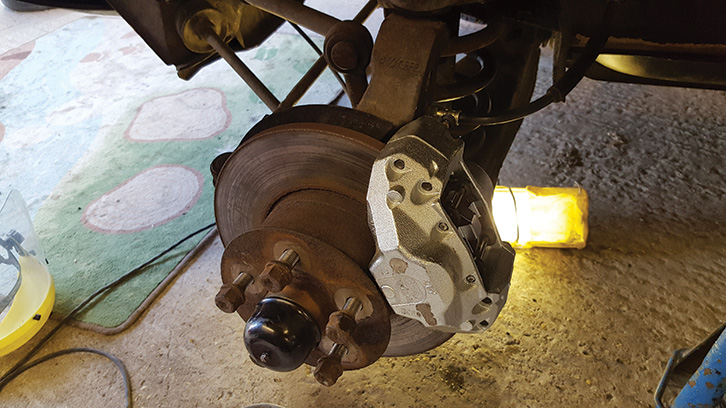
Another common occurrence might be a sticky hand/parking brake. The best way to assess how things are working is to take your ’van for a short test drive.
Release the handbrake and pull away gently. You might get some hesitancy, as if it is still being applied, but typically, it will release as the vehicle moves, possibly with a gentle thump.
Reapply and release the handbrake a few times to assess whether it is working correctly. Any signs of it not releasing or applying as it should will require further investigation by the professionals.
If that all seems good, a short road-test drive should be sufficient to clean light surface rust from the brake discs and restore good function. If after a few miles of stopping and starting, the brakes are noisier than normal, or you notice there is any reduced function, you must book in at your local service centre.
Once you return, take a look at the brake disc, which should be shiny. Anything less will require specialist investigation.
Lights, appliances, windows
It’s unlikely that your vehicle’s bulbs will have failed through lack of use, although not using it for a while can result in the connections becoming dirty, leading to the lights not working.
If your road lights are not responding, get out the handbook for instructions on how to inspect the bulbs. If it’s necessary, you can clean the contacts. If they are just a bit grubby, some WD-40 and a cotton bud will do the trick. If they are looking really encrusted, a strip of sandpaper might be needed to ensure a good connection is achieved.
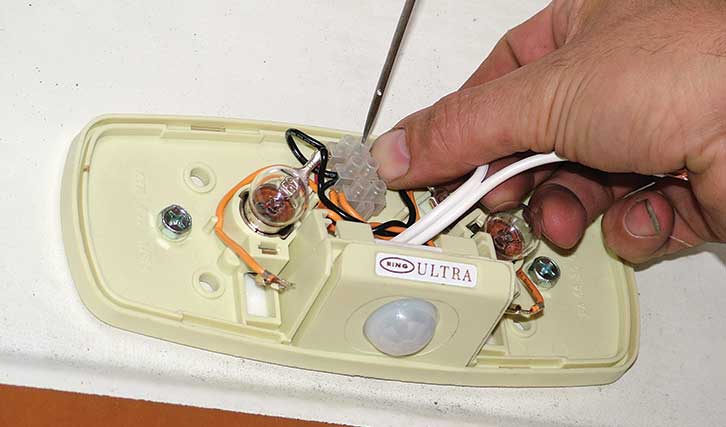
Clean the crud from around vents, grilles and outlets to ensure that everything that breathes, can do so. Over the winter, in particular, leaves and debris can build up around vents, reducing performance and causing leaks or draughts.
If you have the chance, hook up the ’van and turn everything on. Finding out you have non-working sockets, a warm fridge or a lack of heating is a lot more comfortable on your driveway or a local site, rather than waiting to board a ferry or when you are on a remote campsite.
Next, the same trick, but with all of the gas appliances. We are assuming that you have the gas safety checks as part of your regular vehicle servicing, but ensuring that everything works correctly between services and after a lay-up is simply good sense. Light each appliance to ensure it fires up easily, has an even blue flame and is functioning as expected. If anything seems a bit odd, call the workshop.
For the windows, begin by carefully opening them, one at a time. Don’t force any open – window rubbers can stick, and doing so could split the acrylic pane.
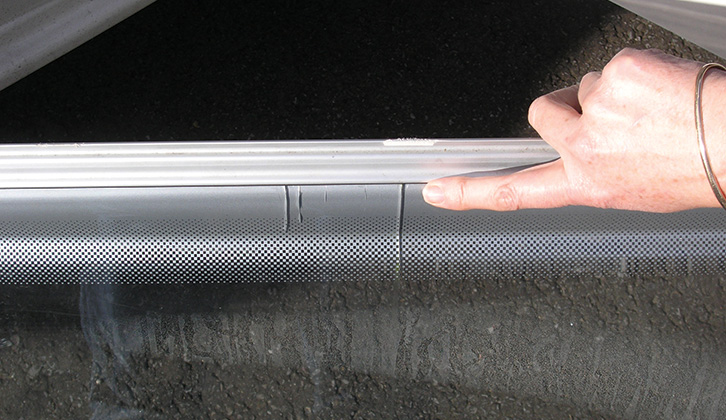
If you come across any sticky rubbers, you can treat it with silicone spray, squirted on a cloth and rubbed around the rubber. Alternatively, if you don’t have that to hand, rummage through the bathroom cupboard for talcum powder. Keeping the rubbers supple also minimises the chances of leaks. It’s a good idea to do the same for locker door rubbers, too.
Locks and latches
Taking a bit of care will help to make sure everything is working as it should with your motorhome locks – after all, they’re not always the most robust.
A dab of graphite grease introduced to the lock barrels keeps the delicate innards moving freely, without leaving sticky muck behind to snare grit and grime. This is a dry lubricant, which you squirt onto the key blade before working it in and out of the lock a few times. Doing this will help to prevent seizing, sticking and bent keys, all of which are miserable.
External locker hinges and latches often don’t like being unused and when they seize, expensive door or body damage can be the result. They are not the easiest things to service, either, but there are a few things that you can do.
If they are already getting a bit stiff, a drizzle of silicone-based lubricant on the moving surfaces will free things up.
If that isn’t doing much, tip hot (not boiling) water over the offending item to ease the nylon/plastic bushings and then reapply the lubricant, which should now be able to find a route in.
Water systems
Ensuring your motorhome’s water system is fresh and safe is simple. Dedicated leisure-vehicle tank cleaners, such as Puriclean or Pro-Kleen, will provide guidance to detail the correct concentration. Fill the fresh tank with it, then turn on the water system.
Go to the tap furthest from the tank and turn it on until the water runs through, then cut it off. Do the same for all of the taps in the system. Leave the system primed like this for a few hours, or however long the instructions suggest. After that, run the system to drain the cleaning solution.
Fill the tank with fresh water and run it through every tap until you can no longer smell the solution. This also deodorises the grey tank. Empty that afterwards!
Future Publishing Limited, the publisher of Practical Motorhome, provides the information in this article in good faith and makes no representation as to its completeness or accuracy. Individuals carrying out the instructions do so at their own risk and must exercise their independent judgement in determining the appropriateness of the advice to their circumstances. Individuals should take appropriate safety precautions and be aware of the risk of electrocution when dealing with electrical products. To the fullest extent permitted by law, neither Future nor its employees or agents shall have any liability in connection with the use of this information. You should check that any van warranty will not be affected before proceeding with DIY projects.
If your motorhome’s ready for the new season but you don’t know where to go for your first tour, our guide to the best motorhome parks is full of top touring destinations.
If you’ve enjoyed reading this article, why not get the latest news, reviews and features delivered direct to your door or inbox every month. Take advantage of our brilliant Practical Motorhome magazine SUBSCRIBERS’ OFFER and SIGN UP TO OUR NEWSLETTER for regular weekly updates on all things motorhome related.
